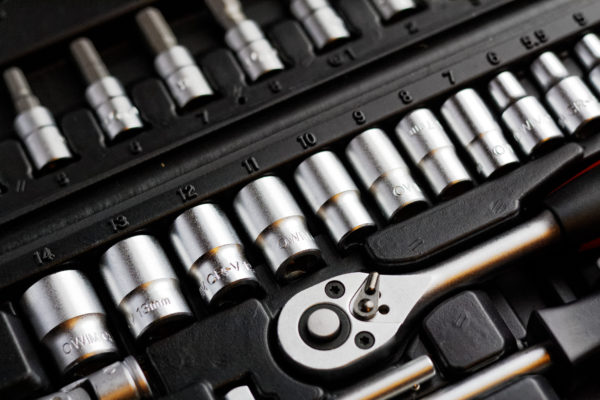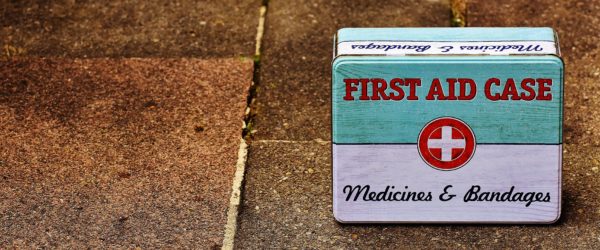You’ve probably found yourself on the side of the road at some point, unless you’re extraordinarily lucky. It always pays to be prepared. Keeping a few basics in your trunk can help you get out of most of these automotive problems, including 1A Auto’s emergency car kit. If you can fix the simple problems yourself, you won’t have to waste time waiting for roadside assistance.
Emergency Car Kit List
Here are some essentials to keep in your trunk:
1. Spare Tire, Tire Iron, and Jack
A flat tire is the most common cause to leave you stranded on the side of the road. These days, you’re pretty lucky if your car comes with a full size spare. Most cars at least come with the “donut” style temporary spare. If you’re buying a used car, or recently bought one, you’ll want to make sure it still has the spare, jack, and lug wrench that came with the car. Otherwise you should consider getting replacements.
Even though you don’t go around driving on your temporary spare (or, at least I hope you don’t), it can eventually wear out, due to dry rot. Periodically check the sidewalls of your spare for cracking to catch dry rot.
Changing a spare tire is a good skill for any driver to have. If you’ve never done it before, this video can show you how in a typical way.
You can also get a rubber patching kit, which is basically the same kit the mechanic will use if you have a puncture. Of course you’ll still have to reinflate the tire, so you’ll probably still have to use the donut to get to a gas station with a good air pump. Patching a tire isn’t difficult, as 1A’s own Stephanie shows us here:
2. Wheel Chocks
Keep a couple blocks of wood in the trunk to keep your car from rolling if you have to jack a wheel up.
3. Tire Sealant
Ok, what if you get a flat and for some reason you don’t have your spare and can’t use it? The spare tire is ideal, but I recommend having a Plan B. There are lots of spray can products that you can use to inflate and seal a flat tire. According to Consumer Reports, these work best for small punctures.
4. Fluids, Funnel, and Rags
Fluid loss is another major reason you may need to pull over. If you’re leaking oil or overheating, it can help to have oil or coolant on hand. Just keep in mind that you do not want to open up the cooling system if the engine is overheating. Wait for it to cool off before twisting off that cap, or you could get sprayed with scalding hot radiator fluid.
Extra washer fluid can be useful if you drive somewhere dirty, snowy, or salty. You don’t want to lose visibility just because you ran out of washer fluid.
A funnel will obviously help you pour the fluids without making a mess, and a rag will help you clean up any messes you do make. The rag will also help you clean off the dipstick when you check the oil level.
5. Jumper Cables
A dead battery can leave you stranded, but at least it will strike you while you’re parked and not driving. A good set of jumper cables will help you get back on the road as long as you can find someone to give you a jump. As a side note, your battery is more likely to go dead in cold weather, so it’s more important to keep jumper cables in your car in the winter months. If you’ve never used jumper cables before, this video will explain how:
6. Basic Tool Kit
A basic tool kit can help you make simple roadside repairs. Pliers, for example, can help you get a nail out of your tire, and wrenches and sockets can help if something, say a mirror, has rattled loose. You can get a small portable tool kit at most hardware stores.

I’ve also heard of people carrying spares for certain wear items, like lightbulbs or belts. This might be a good idea if you’re on a long trip or you have reason to think these parts are in questionable shape, but most of the time, it’s probably overkill.
7. Flashlight
Unfortunately car problems don’t follow any schedule, and you might find yourself on the shoulder after dark. You’ll want to have some sort of flashlight so you can see what you’re doing. A standard flashlight is good, but headlamps are hands free and there are some good ones out there that are surprisingly affordable.
8. Gloves
You’ll want to protect your hands if you have to do any work. A good pair of mechanic’s gloves or a box of rubber gloves will do, whichever you like.
9. First Aid Kit
Hopefully you don’t get hurt too bad, but if you bust a knuckle, you’ll be glad to be able to clean and patch it up.

10. Blanket/Spare Clothes
If you get caught in cold, wind, rain, or snow, you’ll be glad you have a blanket. This is especially helpful if your engine or heat isn’t working. Obviously, you’ll want to stay in the car if possible. If you’re trying to fix something and you get wet, a change of clothes will help you keep warm. A tip I learned from some outdoorsy friends is that wool will keep you warm even if it gets wet. Wool socks are a great investment for life in general. Make sure to pack an extra pair in your car.
11. Food/Water
Whether or not these are really necessary depends on how far you get from civilization in your normal driving. If you live in a city or a suburban area, you’re probably not likely to end up in a Jon Krakauer-style survival situation. If you’re planning a long road trip through the desert, then bring some water, and some long-lasting food like protein bars or granola.
12. Cold Weather Equipment
If you live somewhere it never snows, then this one doesn’t apply to you. The rest of us will definitely want to keep a snow brush and ice scraper handy. Visibility is important, especially if it’s dark and snowy out.
You’ll also want some equipment for if you get stuck on snow or ice. I recommend a small or collapsible shovel. You can also keep sand or kitty litter, which you can sprinkle on snow or ice to help you get traction. Another trick, if you need to get traction, is to use your floor mats. Shovel around the drive wheels (usually the front) and stuff the mats in underneath the tire in the direction you want to go. So if, you’re trying to back up, put the mats behind the tire. You’ll probably scuff up your floor mats and you might shoot them out the other end, so be sure the area is clear.
Closing Thoughts
This may sound like a lot, but some people suggest keeping even more things in your car. This list at least covers your core essentials, most of which can be found in the emergency roadside assistance kit available on 1aauto.com.
As my Dad says, “It’s better to have what you don’t need than need what you don’t have.” Then you’ll be ready for anything the road throws at you.
Related Content
- How to Jumpstart a Car with Jumper Cables
- Recycling Waste Fluids and Oils? How to Dispose of Motor Oil, Antifreeze, Brake Fluid, and More
- How to Put Air in a Tire
- How to Use a Car Jack and Jack Stands
Shop Parts and Tools at 1A Auto




We have always packed our teenagers cars with an “emergency kit” but never thought about adding a funnel! Great idea!! Especially now with some of the inputs for fluids in the strangest places!!